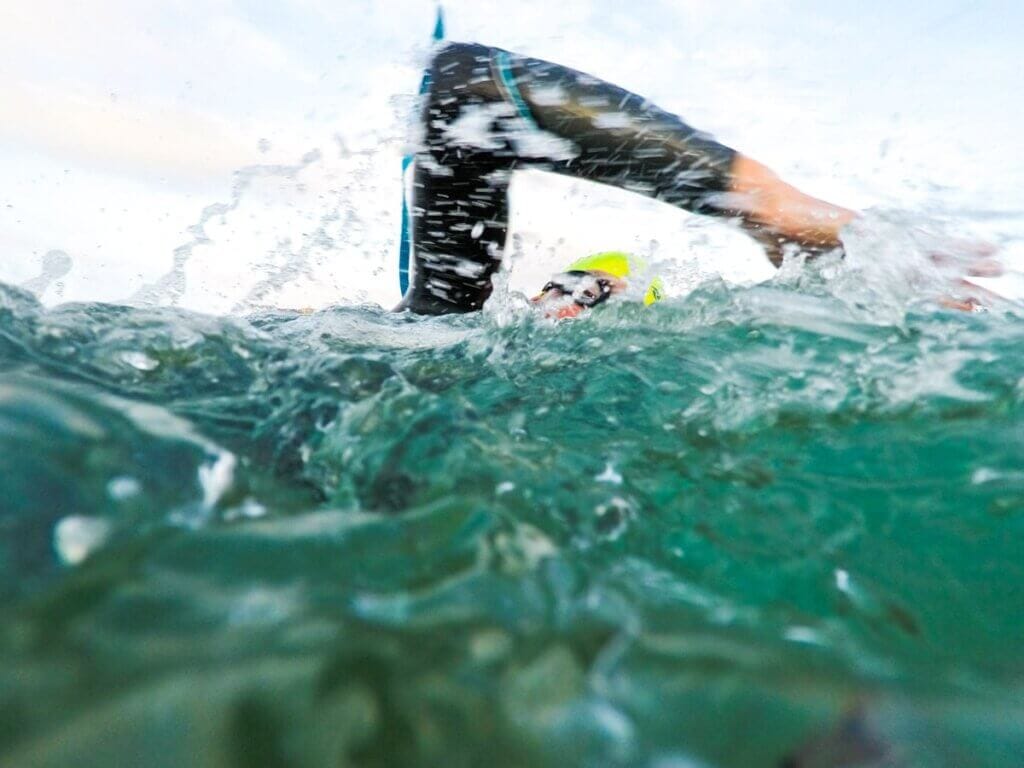Making peace with the pool

There’s no doubt that ocean swimmers enjoy the open water, but if there’s one thing we can almost all agree on, it’s how little we enjoy the pool!
“I’m not going back to the pool”
“I hate following the black line”
“Back and forth, back and forth, no thanks”
Said just about everyone we met on our recent road trip.
And I agree, but… there is one exception and it’s backed by the great surf ironman Robert ‘Chappo’ Chapman (listen to podcast episode), you need to love the pool if you want to be a strong surf swimmer.
In this case, it’s time to make peace with the pool and start to enjoy your swim sessions.
As an adult swimmer, especially if you’ve learnt later in life, there’s every chance you’re missing two key components that differentiate a surf swimmer from a ‘flat water’ swimmer, and they are swimming strength and swimming speed.
You need strength as a surf swimmer because on the way out through the waves, you’re swimming against the ocean. The waves, currents, energy and even water density and wind, can be against you.
You need speed as a surf swimmer because there are times when you need to switch gears to maximise your opportunities, like getting back up to pace after diving under waves, exploiting the distance between waves and in lulls, and for swimming onto waves to body surf.
Slow, weak swimmers get eaten up in the surf.
Fundamentally, it’s not so much about the swim sessions taking place in a pool, but it’s the type of swim training you need to include in your training repertoire.
A structured pool training session should be designed to build your strength and speed, as well as building your aerobic fitness. Hitting the pool (or open water) and just swimming at the same speed for whatever distance and resting whenever, for however long, simply won’t help in this area.
So if you’d like to become stronger in the surf, it’s time to change the way you train.
First things first, get your stroke analysed to ensure it’s efficient.
Then, you need to make sure your swim sessions are structured to include components like drills, interval training, shorter sprints and even the use of equipment, like pull buoys, paddles and kickboards – to name the absolute basics.
There’s obviously a lot to designing the perfect training session, so search online or follow one of our free training programs.
The easiest way to get what you need is to join a coached swim squad. Whether it’s the squad at your local pool, or by joining a Masters swimming club, you won’t have to worry about anything except getting there and putting in the hard work.
Which brings us back to enjoyment.
It was refreshing to hear two much-respected coaches, Vlad Mravec and Paul Lemmon (also listen to their episodes), talk about how enjoyment was at the very centre of their coaching philosophies.
Ultimately, they both agree that enjoyment is a two-sided equation. On one side, you need to want to be there at training and you need to have a reason for being there that makes it enjoyable for you. On the other side, it’s up to the coach to ensure there’s an element of fun in it all.
I guarantee you’ll never regret your pool training when you’re out taming the surf and catching big waves.







Responses